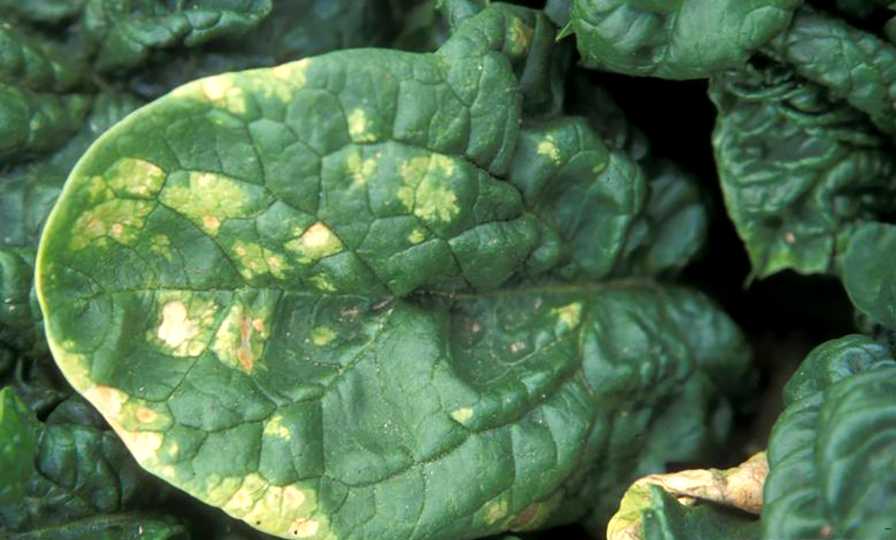What It Takes To Protect Spinach from Downy Mildew
The most destructive disease of spinach worldwide, downy mildew can cause substantial reductions in yield and quality. Losses of up to 100% are possible. Presence of downy mildew can result in rejection in the market.
Identification
Initial symptoms of downy mildew are dull, yellow, irregular-shaped spots on the upper sides of leaves. Lesions can develop on leaves of any age, and the lesions become bright yellow over time. Blue to purple, downy growth forms on the undersides of leaves. This growth consists of the spores and spore-forming structures of the pathogen. The lesions enlarge and eventually become tan in color and dry. Severely infected leaves may become curled and distorted, and multiple infections can lead to a blighting of the leaves. Heavily infected plants may be stunted and eventually die. Symptoms can continue to develop on leaves after harvest, once the product is packed in bags or cartons.
An increase in the rate of emergence of new races of the downy mildew pathogen began in the mid-2000s, and these new races have made it more difficult to manage the disease by using downy mildew-resistant varieties.
Survival and Spread
There are no known alternate hosts for the pathogen that causes spinach downy mildew. The disease likely survives on infested spinach debris and volunteer spinach plants. The pathogen produces two kinds of spores, asexually produced spores (sporangia) and sexually produced spores (oospores). The sporangia are when spores form on the undersides of leaves and are dispersed by wind and splashing water. They can travel long distances in air currents. When sporangia land on spinach leaves, they germinate and infect, resulting in new lesions. Spore formation, dispersal, and infection are favored by cool, wet conditions. Leaves do not have to be wet for infection to occur if humidity levels are high. Heavy canopies associated with dense plantings promote infection and sporulation by the pathogen.
Resistance has been a primary strategy for managing spinach downy mildew. Through sexual reproduction, the pathogen can adapt and form new races that overcome host-resistance genes. Most of the varieties are not resistant to all known races of the pathogen.
Management
Cultural practices are useful in managing downy mildew on spinach. Spring crops should not be planted near fields where fall spinach crops were grown. Highly infected crops should be destroyed as soon as possible to reduce the spread of the disease to neighboring fields. Crop residue should be incorporated immediately after harvest. Rotate away from spinach for at least two to three years if possible. Avoid the use of overhead irrigation or schedule irrigation early in the morning to promote rapid drying and to minimize the number of hours of leaf wetness.
Application of foliar fungicides is also an important tool for managing spinach downy mildew. Plants should be scouted regularly. Most of the fungicides currently registered for use on spinach to control downy mildew are protectants and must be applied before symptoms develop or as soon as the disease is detected.
Consult UF/IFAS recommendations for currently labeled fungicides for downy mildew control in spinach.











